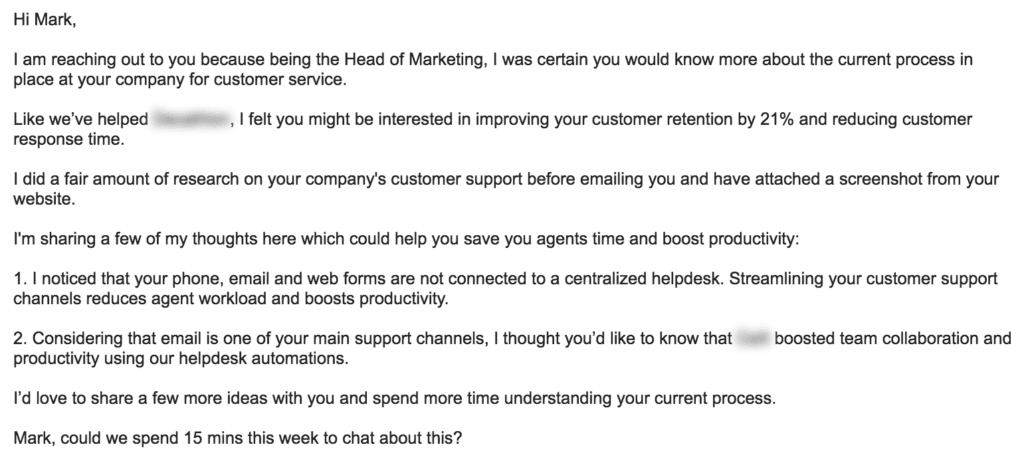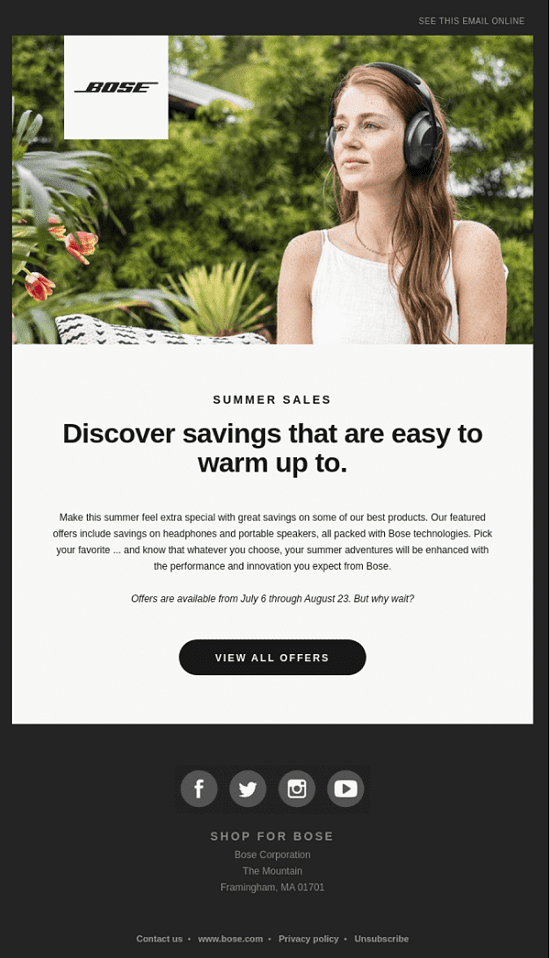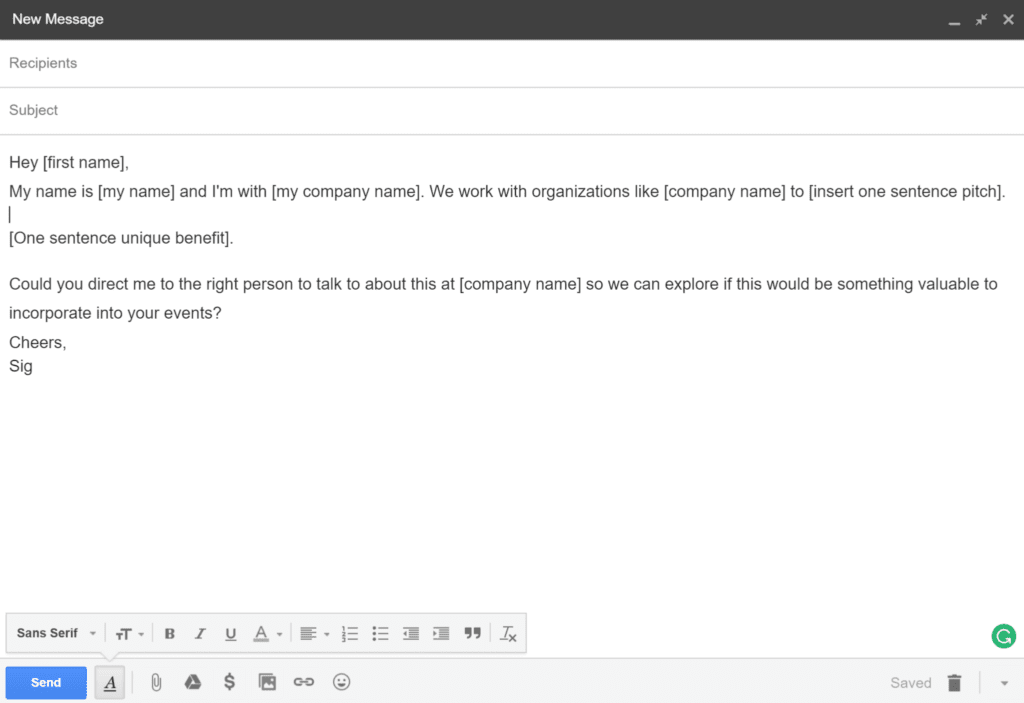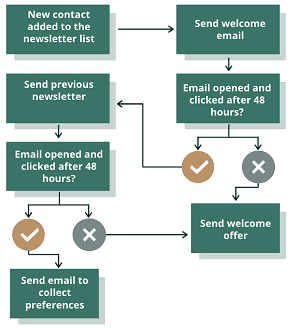

Email marketing strategy consists of cold email and marketing emails. It’s easy to get confused between these two types of email so let’s clear it up for you.
A cold email is sending a message to a stranger with the intent of building a mutually beneficial relationship.
Marketing emails (or newsletters) are pre-written commercial messages sent to a group of subscribers who have consented to receive such communications.
So yes, both approaches involve sending email but differ in tactics, tools, and use cases.
This guide will help you further understand the differences between cold emails and marketing emails, including the best practices for sending both types.
Table of Contents
Cold email and marketing email: A Look at the Definitions
What is a cold email?
Cold emailing is when you send an unsolicited email to someone you typically don’t have a prior relationship with.
Like cold calling, door knocking, or sales letters, cold emailing is a communication method or ‘touch point’ used in sales prospecting and outreach. It’s in the category of outbound sales/marketing — where you try to reach your customers directly.


Cold email example (source)
Many marketers make the mistake of sending cold emails to anyone at all, thinking that sales are merely a numbers game.
However, the prospect must have legitimate interest in your offer in order for it to be GDPR-compliant and get the best results (we’ll explore this later in our best practices for sending cold emails).
What is a marketing email?
A marketing email, email campaign, or newsletter is a commercial email sent to many recipients, referred to as an ’email list’. Here’s an example from Bose.


The recipients are always email subscribers who have opted in (given their consent) to receive email communications from you.
Subscribers are commonly added to email lists via signup forms on your website or at the online checkout. And can unsubscribe from your messages at any time.
Marketing emails fall under the practice of ‘inbound marketing‘, a method of attracting prospective customers by creating valuable content and experiences.
You’ll need a dedicated email marketing tool like Sendinblue to be able to create and send email marketing campaigns.
4 key differences between cold email and email marketing
1. Different objectives
Fundamentally, cold email and email marketing have different goals.
The objective of cold email prospecting is to get brand new leads into your sales funnel. These are usually prospects you haven’t interacted with before — hence why they’re called ‘cold’ leads.
Email marketing, on the other hand, is about nurturing and maintaining relationships with existing prospects and customers. These leads are considered ‘warm’ as they already know your brand and have signed up to receive emails.
When executed effectively, email marketing works to inform, build awareness and convert warm relationships into customers.
2. Different tools
It’s best to keep marketing emails separate from cold emails, meaning don’t send them from the same system or database of contacts.
Sending cold emails from the same IP as your marketing emails could damage your sender reputation and overall email deliverability (i.e. your ability to land emails in the inbox).
‼️ That’s why for email marketing tools like Sendinblue, your contacts need to be 100% “opt-in”. Sendinblue is not suitable for sending cold email campaigns.
If you want a tool to manage cold email prospecting, it’s best to use a dedicated email outreach solution such as Waalaxy or similar.
3. Different KPIs & metrics
The success of cold email prospecting and email marketing is measured with very different metrics and KPIs.
A good average open rate for email marketing is in the ballpark of 25 – 30%. The equivalent figure for cold emails is around 80%.
But just because messages are opened doesn’t mean they’re effective!
In fact, people have become pretty numb to cold emails — 95% of outreach messages get ignored.
It’s no surprise really when you receive generic, lazy emails like this:


With high open rates, yet terrible cookie-cutter emails landing in inboxes, cold email success is an issue of execution, not strategy.
As cold emails are one-to-one communication, the main objective is to get a response from the prospect to start a conversation. Therefore it’s essential to measure reply rates when evaluating cold campaigns.
Conversely, email marketing is one-to-many communication, where you’re trying to get prospects to click (or tap) links to specific pages. Reply rates, in this context, are not as important. Rather you’d measure the number of clicks or actions a user takes, which wouldn’t make any sense for cold emailing.
Email volumes also differ widely between cold email and email marketing. While email marketing lets you send to thousands of people at once, cold email campaigns tend to be more staggered. For example you could email 100 people a day, with up to 7 follow-up messages in a four-week period.
The difference in scale between cold emailing and email marketing is immense, which means growth teams need to pay close attention to workload management for each task. More on that later.
4. Different email content and frequency
Marketing emails include a mixed bag of messages, including; newsletters, welcome emails, company updates, and seasonal campaigns such as Black Friday emails.
These campaigns are sent at regular intervals, and subscribers generally know what frequency to expect when signing up.
Not only that but marketing emails are often sent in predetermined workflows using what’s called email automation — where prospects receive multiple emails over a defined period upon opting into the campaign.


Email automation workflow example
Lastly, email marketing messages can be automatically sent in response to conditional logic from user behavior. For example, if a prospect leaves a product in their cart without purchasing, an automated email will remind them of the pending purchase.
Contrary to that, cold emails are again about getting a reply for a demo request, direct sale, or jumping on a call. These emails are more sporadic and dependent on a direct response than automated email sequences.
5. Different skills and roles
While marketing emails and cold emailing have overlapping sales and marketing objectives, they require different skills and sometimes different roles.
Cold email prospecting is closely tied to sales responsibilities and best assigned to people who are excellent relationship builders and closers. They also need to be able to manage high volumes of one-to-one email interactions.
Email marketing is best handled by marketers who specialize in developing customer journeys and excel in copywriting.
But a small business owner or individual can easily find themselves managing both.
For example, a real estate agent will use cold email prospecting to form new one-to-one connections with potential clients. They’ll also leverage email marketing campaigns to keep in touch with their existing subscribers and stay top of mind when anyone is thinking of buying or selling a property.
Best practices for sending a cold email
Is it legal to send cold emails? Under the GDPR, it’s still possible to send cold emails provided your offer contains legitimate interest for the prospect or a clear benefit for both parties.
To comply with this, always include the reasons for contacting the prospects. For instance, your product or service supports their goals.
Following that, you should also do the following:
- Keep it strictly B2B. Cold emails should only be sent between B2B enterprises. A quick reminder — GDPR is about protecting individuals, not businesses.
- Include a visible unsubscribe link in your cold emails. Alternatively, you can give the prospect the option to opt out by replying to your message.
- Don’t buy email lists. Instead, use professional B2B lead gen or data automation solutions to enrich your lists and get the contact information of people you genuinely want to target.
- Keep your CRM data for cold email prospecting separate from your email marketing efforts.
‼️ As a friendly reminder, your Sendinblue email lists must be 100% opt-in, so it’s not suitable for cold email management.
Best practices for sending marketing emails
In 1999, marketing guru Seth Godin coined the term ‘permission marketing’ in his book with the same name.
His idea was that traditional forms of marketing and sales like cold emails were invasive and disruptive to customers. Instead, marketers should focus on seeking permission from prospects to form a transparent relationship. And this is precisely how email marketing works today.
Marketing emails revolve around getting permission from prospects to send them relevant messages. Setting up online opt-in methods is an essential part of any digital transformation strategy.
How to get consent from email subscribers
- Gather consent via opt-in forms on your website, at checkout, or from sharing on social media.
- Manually add contacts to your email list, provided they consent to receive your marketing messages (note that under GDPR you need to be able to show proof of consent). If you’re at an in-person event, have the prospect complete a physical form with their contact information to receive your emails, then add them to your email list later.
- Create a lead magnet like a quiz, email series, or a downloadable PDF to incentivize more signups.
Regardless of how you increase your email signups, it’s absolutely critical that you deliver what your subscribers have signed up for, whether it’s the type of content or email frequency. Not doing so will result in high unsubscribe rates, which leads to the next point…
- Always include an unsubscribe link to give subscribers the option to stop receiving your marketing emails.
Remember, this is a relationship based on permission. Plus, if someone wishes to unsubscribe, they’re probably no longer a quality lead for your business.
It’s also courteous to add an ‘Update preferences’ link in your emails to give subscribers the ability to change their details, e.g. self-selecting different email lists or updating contact information.
Check out this article to learn more about email newsletter best pratices!
Benefits of cold email
The benefit of cold emailing is speed. By reaching your prospect directly with a personalized message, the faster you can move them along the sales funnel.
With the majority of people doing a poor job on cold emails, there’s more opportunity for you to swoop in and take the market share.
And perhaps the most important point, you don’t need an audience to make sales with email outreach. No content marketing or PPC ads are required. You just need to be willing to put in the effort one prospect at a time.
Benefits of marketing emails
What makes marketing emails so dang attractive is the scale.
Providing you have a process for building an audience and converting them into subscribers, nothing can compete with automatically reaching infinite prospects with targeted campaigns.
Unlike cold emailing, where you have to be 100% present to make sales, marketing emails do the work for you once set up, even when you’re asleep.
Finally, from a psychological perspective, you rarely experience rejection through marketing emails.
The closest thing would be having someone unsubscribe from your email list, or you may get a nasty response once in a blue moon. But it still pales in comparison to the sometimes harsh rejection that comes with cold email marketing.
Finding the balance between marketing emails and cold emails
It’s important not to confuse cold email with email marketing.
Cold email prospecting is outbound marketing, while marketing emails are a form of inbound marketing.
It’s the difference between directly going after a prospect and attracting your ideal customer to your brand.
While there are some overlapping goals (the sale), each approach requires different metrics, tools, content, frequency, and skills.
Whether you sit in ‘team cold emailing’ or ‘team marketing emails’ camp, both methods deserve their place in your sales and marketing strategy.
 Deutsch
Deutsch




















